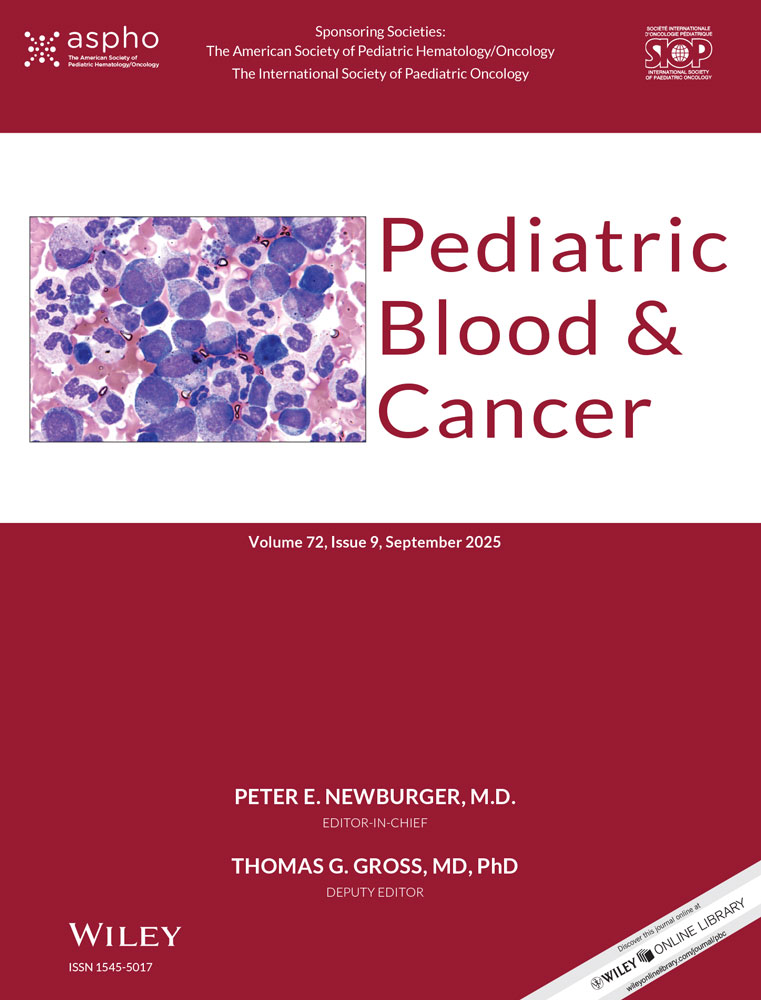Mutation analysis of SBDS in pediatric acute myeloblastic leukemia
Abstract
Background
Shwachman–Diamond syndrome (SDS) is associated with a high risk of myelodysplasia, acute myeloid leukemia (AML), and chromosome 7 abnormalities. Ninety percent of SDS patients have mutations in SBDS on 7q11. Herein, we studied the role of genetic alterations in SBDS in AML.
Procedure
DNA was extracted from marrows of SDS patients with AML, as well as from children with de novo AML. Direct sequencing of PCR amplified genomic DNA was performed using specific primers flanking each exon. To study whether SBDS heterozygosity confers a risk for MDS/AML, data on family members of SDS patients on the Canadian Inherited Marrow Failure Registry (CIMFR) was analyzed.
Results
Of two SDS patients with SDS/AML one was homozygous 258 + 2T > C, and one was compound heterozygous 183-184TA > CT/258 + 2T > C. To determine whether a subset of patients with SDS can present with AML, we analyzed 48 AML samples at remission, but no mutations were identified. To address whether acquired mutated SBDS gene is associated with leukemic transformation in de novo AML, we analyzed 77 AML samples at diagnosis or relapse (4 with -7 and 7q-) for SBDS mutations; no alterations were detected. Also, among the relatives of an SDS patient cohort on the registry no cases of MDS/AML were reported.
Conclusions
Common mutations occurred in our SDS patients who develop AML, and thus, AML is not confined to a rare genetic subgroup of SDS. Newly diagnosed patients with AML are unlikely to have an underlying undiagnosed SDS. Acquired SBDS gene mutations also would appear unlikely to play a mechanistic role in de novo AML, and might not be involved in the pathogenesis of chromosome 7 abnormalities as well. © 2005 Wiley-Liss, Inc.




